Key takeaways:
- Selective mutism is a complex anxiety disorder affecting communication in social settings, rooted in fear of judgment and performance pressure.
- Raising awareness about selective mutism fosters understanding, empathy, and helps break the stigma surrounding anxious behaviors.
- Effective strategies for handling awkward conversations include using humor, asking open-ended questions, and practicing deep breathing.
- Building confidence in communication involves preparation, recognizing small victories, and seeing each conversation as an opportunity for practice.

Understanding Selective Mutism
Selective mutism is a complex anxiety disorder, often seen in children, where the individual cannot speak in certain social situations despite having the ability to communicate verbally in comfortable settings, like at home. I remember the first time I witnessed a child struggle with this; she was eloquent and lively with her family but transformed into a silent shadow among peers. It made me wonder – what fear grips their hearts to silence them in a world where their voices should be heard?
The emotional landscape of selective mutism is deeply nuanced. For many, the fear of judgment or the pressure to perform in social situations is overwhelming. I often found myself reflecting on how daunting it can be to face a crowd when the weight of expectation feels like a heavy blanket, stifling one’s voice. How many of us have felt that urge to retreat into ourselves when speaking seems too hard?
Understanding selective mutism involves recognizing the internal struggles that people endure. It’s not merely a choice to remain silent; it’s a battle against anxiety that can feel isolating. I think of it as being trapped in an invisible cage, overhearing the world around, longing to join in yet unable to break free. Have you ever found yourself in a situation where you wanted to speak but simply could not? Knowing you’re not alone can be a comforting realization for anyone navigating this silent struggle.
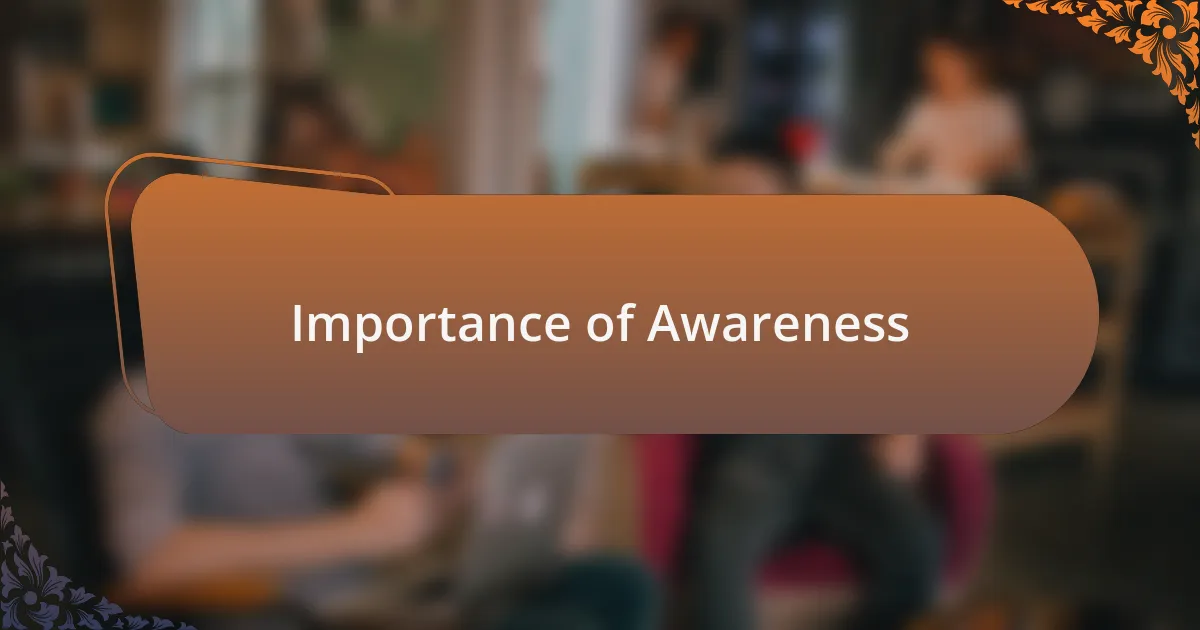
Importance of Awareness
Awareness around selective mutism is crucial because it fosters understanding and empathy in social settings. I recall a moment when a friend, unaware of my own struggles, asked why I seemed withdrawn at gatherings. Her confusion made me realize how vital it is for people to recognize that silence is often rooted in deeper feelings of anxiety, rather than disinterest. Wouldn’t we all benefit from a little more patience and compassion?
When more people are informed about selective mutism, they can support individuals better. I often think about how a simple gesture, like acknowledging someone’s presence without expectation for a response, can make a world of difference. It’s fascinating to consider how we can create inclusive environments—have you ever thought about how small acts of kindness could encourage someone to speak up, even just a little?
Lastly, raising awareness helps break the stigma surrounding anxious behaviors. I remember a school seminar on mental health where stories were shared that shed light on silent struggles. The atmosphere shifted significantly; people began to open up. It made me ponder: how many voices remain unheard because we misunderstand the silence? By illuminating these experiences, we empower people to seek help and express themselves more freely.
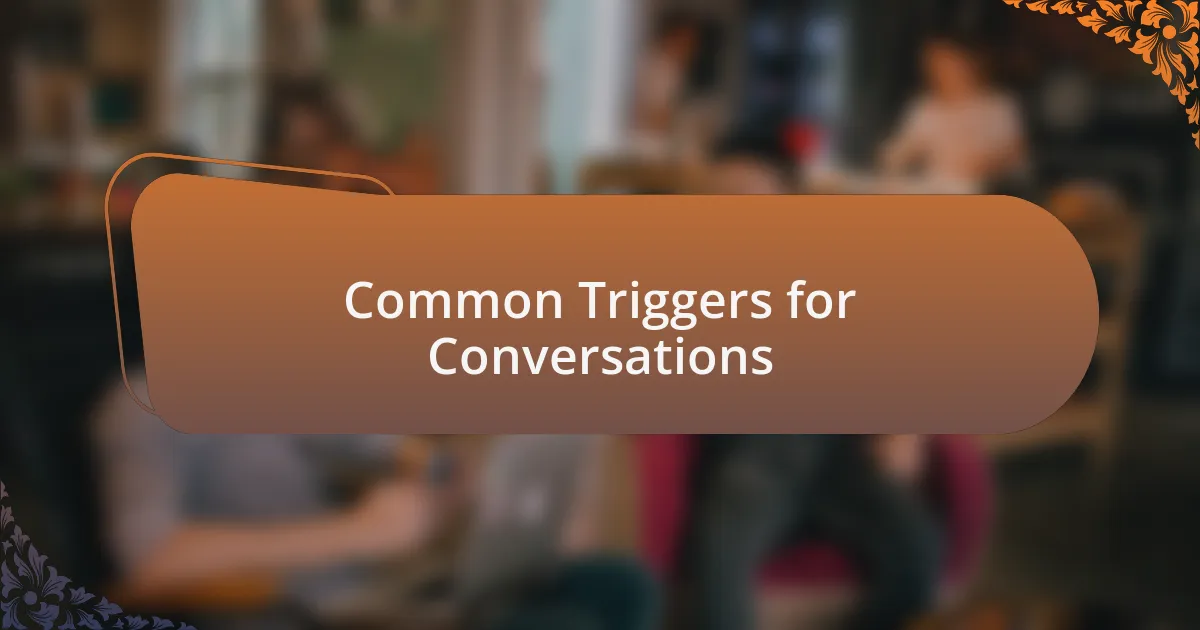
Common Triggers for Conversations
Conversations can often be triggered by specific situations or settings that induce anxiety. For instance, I remember feeling a rush of unease during group projects at school. Surrounded by peers, the pressure to contribute made my words feel trapped. Have you ever felt the weight of silence in a room full of people? It’s that palpable tension that often heightens my own discomfort.
Social gatherings can be particularly challenging. I once attended a family reunion where the noise level was overwhelming. My relatives were excitedly sharing stories, but I found it hard to join in. The loud laughter and chatter pushed me further into my shell. It makes me think: why do we often forget that some people thrive in quiet moments? Understanding these triggers can help create more supportive environments.
Then there’s the pressure of small talk. I vividly recall sitting next to a colleague during a lunch break, with silence stretching awkwardly between us. The expectation to fill that gap felt insurmountable. Isn’t it interesting how often we force ourselves to speak when sometimes, just sharing a comfortable silence is enough? Recognizing these moments can help ease the burden of conversation, allowing space for those who need it.

Strategies for Handling Awkward Moments
When faced with an awkward moment, one effective strategy is to lean into humor. I remember a situation where a sudden lull in conversation made everyone shift uncomfortably in their seats. I cracked a light-hearted joke about the weather, and suddenly the tension dissolved into laughter. Isn’t it fascinating how a simple laugh can turn the air in a room from heavy to light?
Another approach I’ve found helpful is asking open-ended questions. I recall sitting at a dinner party, feeling out of place until I shifted the focus onto others by asking about their interests. When I asked someone about their recent vacation, the conversation ignited with stories and laughter. This not only took the spotlight off me but also helped me connect more deeply with others through their experiences.
Lastly, practicing deep breathing can be a game-changer. There have been moments when I felt my heart racing, like during a job interview. Taking a few deep breaths allowed me to steady my nerves and approach the conversation more calmly. Have you ever noticed how just a moment of pause can make a world of difference? It’s incredible how slowing down can help regain control of the conversation.
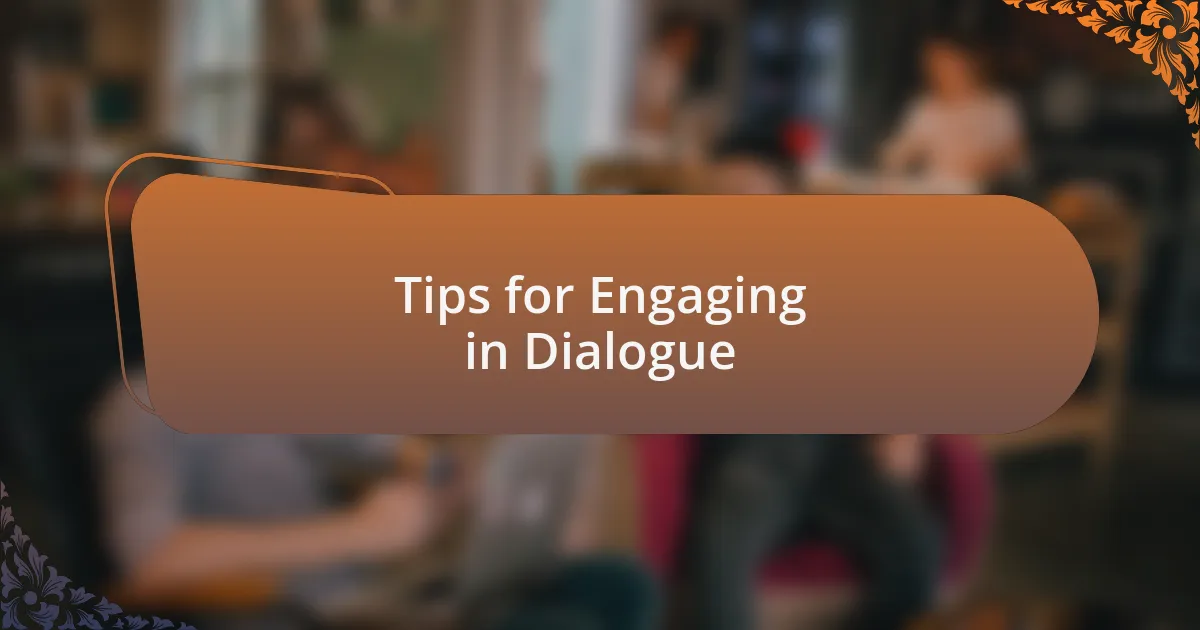
Tips for Engaging in Dialogue
Engaging in dialogue often requires active listening. I remember a conversation at a community event where I felt tempted to interrupt with my own thoughts. But instead, I focused intently on what the other person was saying. I found that by truly absorbing their words, I could ask more meaningful follow-up questions, which seemed to deepen our connection. Isn’t it remarkable how listening can often speak louder than words?
Another tip is to share a personal story relevant to the topic at hand; it invites others in. Once, during a discussion about travel, I opened up about my first solo trip, including my fears and the unexpected friendships I formed. Sharing allowed people not only to relate but also to share their own experiences. Doesn’t it feel good to break down barriers by revealing a piece of ourselves?
Lastly, maintaining positive body language goes a long way. I recall standing nervously at a networking event, arms crossed unintentionally. A seasoned professional kindly pointed out that my posture might come off as closed-off. After relaxing my stance and making eye contact, the change in the conversations was immediate. Have you ever noticed how a simple smile or relaxed posture can make someone feel instantly more approachable? It’s always worth being mindful of how our physical presence can influence dialogue.
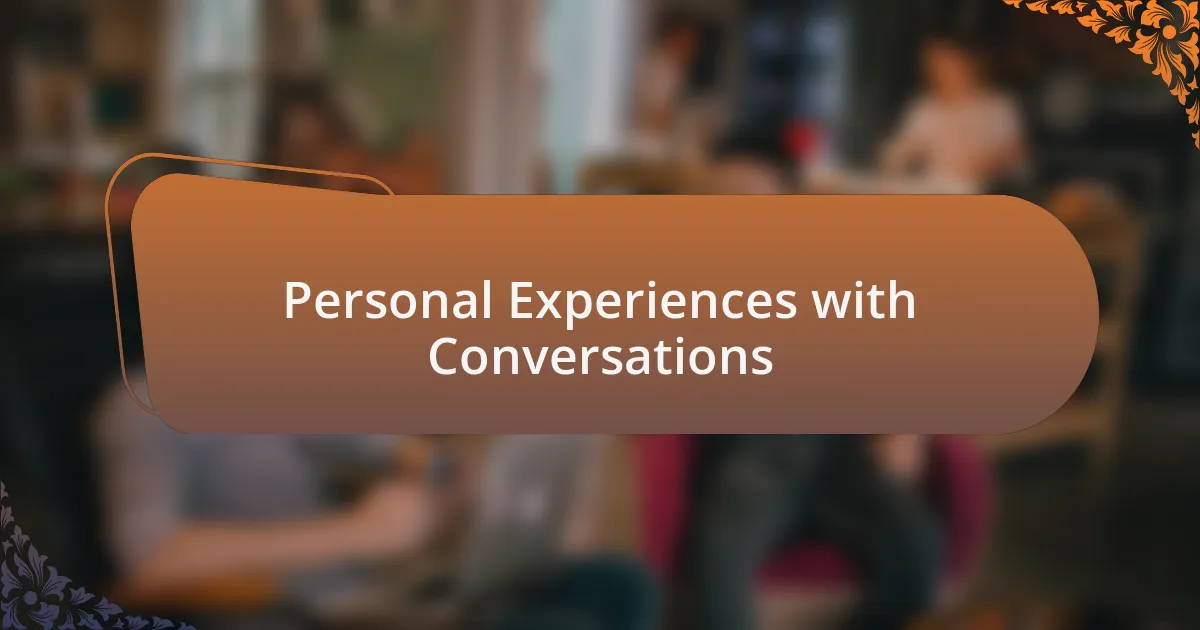
Personal Experiences with Conversations
In my experience, navigating awkward conversations can sometimes feel like walking a tightrope. I recall a time when I was caught off guard by a friend’s unexpected question about my feelings on a sensitive topic. Instead of shying away, I took a deep breath and shared my honest thoughts. The relief that followed was immediate, as we ended up having a candid conversation that strengthened our friendship. It makes me wonder how often we sidestep genuine dialogue out of fear.
There was another instance when I misread a social cue, thinking someone was uninterested in chatting. As I turned to leave, I heard the person call out to me. My heart raced as I turned back, and to my surprise, they wanted to discuss a shared interest we both had. That moment taught me how easily misunderstandings can occur, and it emphasized the importance of persistence in conversations. How many connections do we miss when we assume someone isn’t interested?
Finally, I remember a particularly awkward family gathering where small talk felt stifled. I decided to break the ice by asking my cousin about her recent art project, something I knew she was passionate about. As her face lit up, the tension melted away, and soon, our entire table was engaged in a lively discussion. Isn’t it fascinating how one thoughtful question can transform the atmosphere and invite others to open up?
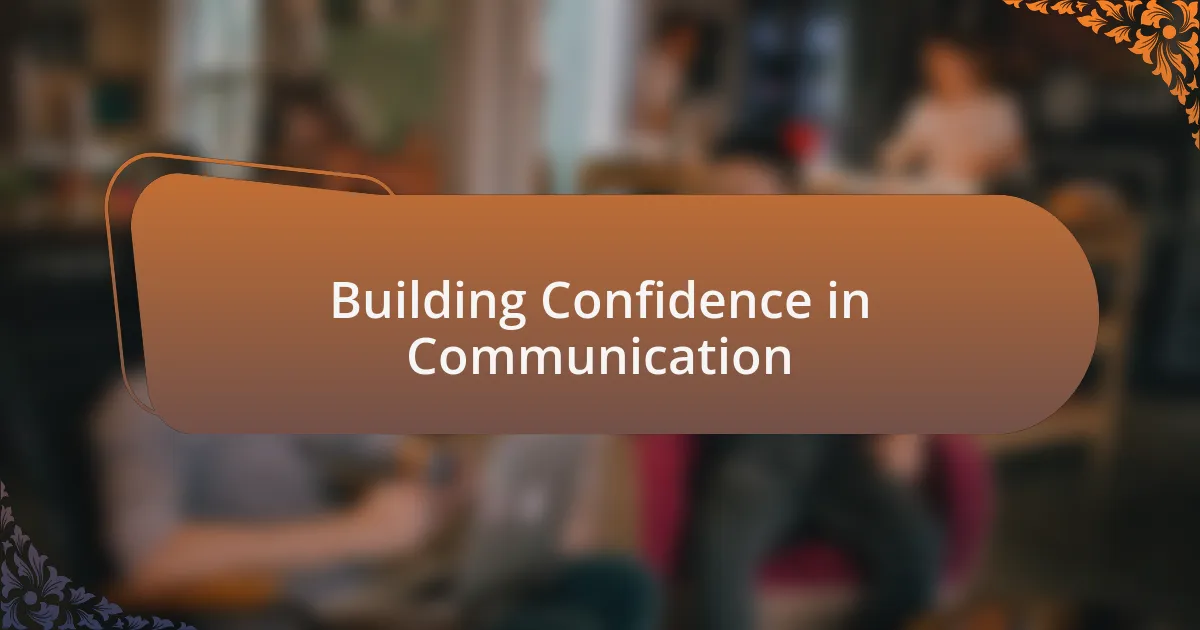
Building Confidence in Communication
Building confidence in communication is a journey inspired by countless small victories. I remember the first time I spoke during a meeting at work; my palms were sweaty, and my voice trembled. After sharing my opinion, I noticed my colleagues nodding in agreement, which brought an unexpected surge of confidence and made me realize how much I had been underestimating my voice.
Reflecting on those moments, I’ve learned that preparation can be a game changer. Prior to an important conversation, I often jot down key points I want to address. This practice not only calms my nerves but also empowers me to articulate my thoughts clearly. Has preparation ever helped you feel more assured in your discussions?
Over time, I’ve come to understand that every conversation is an opportunity to practice. There was an occasion when I volunteered to lead a group discussion at a community event. Initially, the thought of speaking in front of strangers was daunting. Yet, as I engaged with the audience, I felt a sense of connection that ignited my passion for sharing ideas. It made me ponder how each dialogue, whether awkward or smooth, shapes our ability to communicate with confidence.